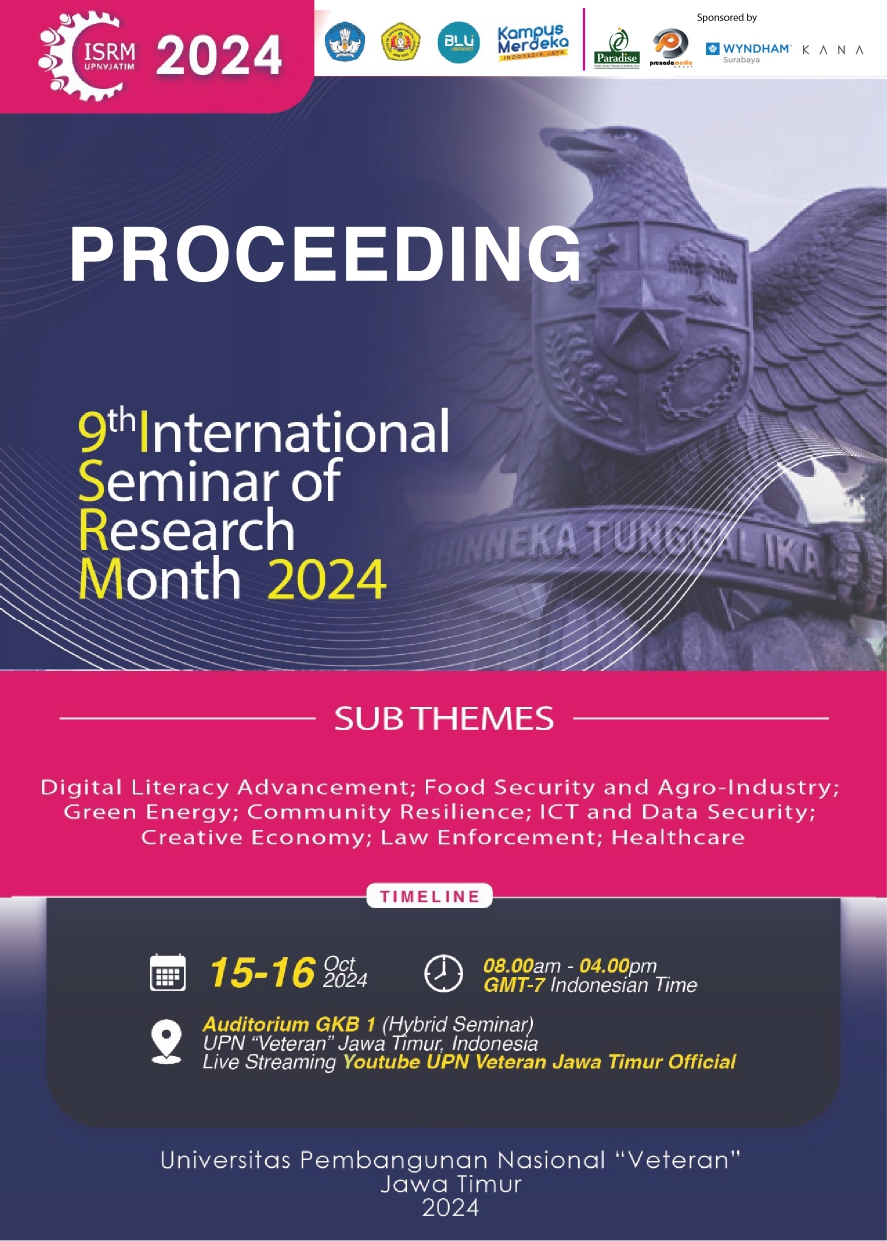Bioplastic Resin as a Preservation Medium for Insect Comparative Effectiveness of Polyester Resin and Catalysts
DOI:
https://doi.org/10.11594/nstp.2025.4732Keywords:
Bioplastic resin, insects, learning media, resin, morphologyAbstract
Learning media is one of the important tools in the learning process because it can increase the effectiveness and efficiency of learning. In the field of biology education and related sciences such as agriculture, learning about the morphology of living things requires preserved specimens as learning media. However, preserved specimens often experience morphological damage, so a method is needed to maintain the morphology of the specimen. One method that can be used is bioplastic preservation using resin. This study aims to determine the best composition comparison between polyester resin and various catalyst concentrations in making insect bioplastic preservation. This study involved five treatments, namely control in the form of dry insect preservation, 100:0.50 ml, 100:0.75 ml, 100:1 ml, and 100:1.25 ml. Observations were made using a digital microscope to determine the differences in insect morphology in each treatment more specifically. The results showed that the resin treatment and various catalyst concentrations produced insect bioplastic preservation with better resistance than the control treatment and the same good appearance as the control treatment. The conclusion of this study is that bioplastic preservation is an effective method for preserving insects with preserved specimen morphology so that it can be used as an effective and efficient learning medium in biology learning, especially in applied biology such as entomology.
Downloads
References
Asmara, A. (2022). Media pembelajaran: Pemanfaatan bioplastik untuk pembelajaran dalam jaringan pada masa pandemi. Prosiding Konferensi Nasional Penelitian dan Pengabdian Universitas Buana Perjuangan Karawang, 2(1), 1614-1621.
Barling, N., Martill, D. M., & Gallien, F. (2019). The resin transfer technique: An application to insect fossils in laminated limestones of the Crato Formation (Lower Cretaceous) of north-east Brazil. Cretaceous Research, 98, 179-188.
Bejcek, J. R., Curtis-Robles, R., Riley, M., Brundage, A., Hamer, S. A., & Hamer, G. L. (2018). Clear resin casting of arthropods of medical importance for use in educational and outreach activities. Journal of Insect Science, 18(2), 34.
Chatterjee, H. J., Hannan, L., & Thomson, L. (2016). An introduction to object-based learning and multisensory engagement. In Engaging the senses: Object-based learning in higher education (pp. 15-32). Routledge.
Dale, V., Tasler, N., & Sánchez-Jáuregui, L. (2022). Object-based learning: active learning through enquiry. https://openpress.sussex.ac.uk/ideasforactivelearning/chapter/object-based-learning-active-learning-through-enquiry/
El-Bishouty, M. M., Aldraiweesh, A., Alturki, U., Tortorella, R., Yang, J., Chang, T. W., & Graf, S. (2019). Use of felder and silverman learning style model for online course design. Educational Technology Research and Development, 67(1), 161-177.
Handayani, T. L., Retnoningsih, A., & Herlina, L. (2013). Efektivitas group investigation ditunjang penugasan awetan bioplastik terhadap hasil belajar dan minat wirausaha. Journal of Biology Education, 2(1), 73.
Haryadi, N.T., & Purnomo, H. (2014). IbM Pembuatan Insektarium dan Embedding Serangga Menjadi Souvenir. Laporan akhir. Universitas Jember.
Jeong, H., & Jang, K. S. (2024). Catalysis of silver and bismuth in various epoxy resins. Polymers, 16(3), 439.
Kalshoven, L. G. E. (1981). Pests of crops in Indonesia. van der Laan, PA (trans. and ed.) PT Ichtiar Baru-Van Hoeve, Jakarta. Translation of: De plagen van de cultuurgewassen in Indonesie.
Lumowa, S. V. T., & Purwati, S. (2022). Entomologi. Media Nusa Creative (MNC Publishing).
Oliveira, A., Spinola, V., Garrido, D., Teixeira, M. M., Salles, C., & Haddad, A. E. (2023). Influence of learning styles on student performance in self-instructional courses. Plos one, 18(7), e0289036.
Raza, M. T., & Jahangeer (2023). Chapter -1 Dry Preservation Technique of Natural History Specimens (With Special reference of Insects). In book Integrated Publication,2, 3-13. doi: 10.22271/int.book.335.
Rahma, R., Jamilah, J., & Ali, A. (2019). Pengaruh penggunaan media awetan kering metamorfosis kupu-kupu terhadap hasil belajar peserta didik kelas VIII Mts Bontoramba Kabupaten Jeneponto. Al-Ahya: Jurnal Pendidikan Biologi, 1(3), 74-81.
Rohmah, D. A., Utami, S., & Primiani, C. N. (2020). Penyusunan ensiklopedia dan media katalase resin berbasis identifikasi keanekaragaman arthropoda tanah di kawasan alas kucur Kabupaten Ponorogo Sebagai Sumber Belajar SMA Kelas X. In Prosiding Seminar Nasional Simbiosis, 5.
Schauff, M. E. (Ed.). (2001). Collecting and preserving insects and mites: techniques and tools. National Museum of Natural History.
Suryana, S., & Putra, R. E. (2019). Optimasi formulasi resin-katalis dalam pembuatan media pembelajaran bioplastik tumbuhan thallus. KANDAGA, 1(2), 46-55.
Tahir, W. M. M. W., Dol, A. H., Wahid, A., & Hussin, A. H. (2019). students’learning styles and their academic performance in accounting course. Journal of Academia, 7, 10-17.
Yu, T. L. (1996). Glass transition temperature profile of the curing reaction of unsaturated polyester resin. Polymer journal, 28(11), 965-969.
Yulianty., Kanedi, M., Handayani, K., & Arifiyanto, A. (2023). Pelatihan pembuatan spesimen awetan tumbuhan dan hewan sebagai media pembelajaran dalam mengungkap keanekaragaman hayati. AMMA: Jurnal Pengabdian Masyarakat, 2(7), 782-786.
Downloads
Published
Conference Proceedings Volume
Section
License

This work is licensed under a Creative Commons Attribution 4.0 International License.
Authors who publish with this proceedings agree to the following terms:
Authors retain copyright and grant the Nusantara Science and Technology Proceedings right of first publication with the work simultaneously licensed under a Creative Commons Attribution License that allows others to share the work with an acknowledgement of the work's authorship and initial publication in this proceeding.
Authors are able to enter into separate, additional contractual arrangements for the non-exclusive distribution of the proceedings published version of the work (e.g., post it to an institutional repository or publish it in a book), with an acknowledgement of its initial publication in this proceeding.
Authors are permitted and encouraged to post their work online (e.g., in institutional repositories or on their website) prior to and during the submission process, as it can lead to productive exchanges, as well as earlier and greater citation of published work (See the Effect of Open Access).














